Management System Certification
SIGMA CERTIFICATION PTY. LTD provides services for people and businesses Optimizing on our team of industry experts, sector specific knowledge and with the rudimentary understanding of our clients' requirements, We offer customized solutions for ISO 9001:2015, ISO 14001:2015, OHSAS 18001, ISO 22000, ISO 27001, ISO 13485, CE Mark, HACCP, HALAL, BIFMA, GMP. to maximize functionality of processes and add value to client's business. Our competent and experienced Management System Consultants (in the domain of Quality, Environment, Occupational Health and Safety, Food safety, IT etc.) guide our client organizations how to implement Management Systems as per various National & International Standards ensuring Quality improvement, Customer Satisfaction, Business Transformation and Continual Improvement.
- Save money
- Increase profit
- Win more business
- Satisfy more customers

An ISO 9001 quality management system will help you to continually monitor and manage quality across all operations. As the world's most widely recognized quality management standard, it outlines ways to achieve, as well as benchmark, consistent performance and service.
What are the benefits of ISO 9001 Quality Management?
- Allows you to become a more consistent competitor in your marketplace
- Better quality management helps you meet customer needs
- More efficient ways of working will save time, money and resources
- Improved operational performance will cut errors and increase profits
- Motivate and engage staff with more efficient internal processes
- Win more high value customers with better customer service
- Broaden business opportunities by demonstrating compliance
The benefits of using ISO 14001:2015 can include:
- Reduced cost of waste management
- Savings in consumption of energy and materials
- Lower distribution costs
- Improved corporate image among regulators, customers and the public
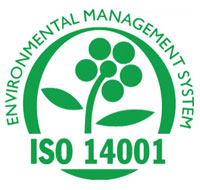
Small and medium sized enterprises (SMEs) also benefit from ISO 14001:2015. However, implementing an environmental management system in SMEs can be challenging. The publication ISO 14001, Environmental Management Systems - An easy to use checklist for small business, will help SMEs to achieve the benefits of implementing an environmental management system based on ISO 14001.
Benefits - How Can OHSAS Help?
The OHSAS specification is applicable to any organization that wishes to:
- Establish an OH&S management system to eliminate or minimize risk to employees and other interested parties who may be exposed to OH&S risks associated with its activities
- Assure itself of its conformance with its stated OH&S policy
- Demonstrate such conformance to others
- Implement, maintain and continually improve an OH&S management system
- Make a self-determination and declaration of conformance with this OHSAS specification
- Seek certification/registration of its OH&S management system by an external organization
- Essentially, OHSAS helps in a variety of respects... it helps: minimize risk to employees/etc, improve an existing OH&S management system, demonstrate diligence, gain assurance etc. The benefits can be substantial
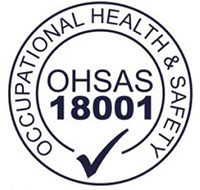
- Management systems in place
- Planning and risk assessment
- Staff training and awareness
- Communication of safety management systems
- Response to emergency situations
- Monitoring and continual improvement
ISO 22000:2005 sets out the requirements for a food safety management system and can be certified to. It maps out what an organization needs to do to demonstrate its ability to control food safety hazards in order to ensure that food is safe. It can be used by any organization regardless of its size or position in the food chain.
The purpose of ISO 22000 is to provide a practical approach to ensure the reduction and elimination of food safety risks as a means to protect consumers. ISO 22000 is intended to help organizations:
- Embed and improve the internal processes needed to provide consistently safe food
- Provide confidence to the organization and the management team that the organization's practices and procedures are in place and that they are effective and robust
- Provide confidence to customers and other stakeholders (through the ISO 22000 certification process) that the organization has the ability to control food safety hazards and provide safe products
- Provide a means of continual improvement that ensures that the food safety management system is reviewed and updated so that all activities related to food safety are continually optimized and effective
- Ensure adequate control at all stages of the food supply chain to prevent the introduction of food safety hazards
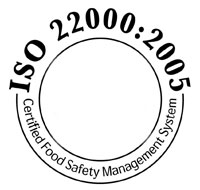
What is an ISMS?
An ISMS is a systematic approach to managing sensitive company information so that it remains secure. It includes people, processes and IT systems by applying a risk management process. It can help small, medium and large businesses in any sector keep information assets secure.
Benefits of ISO 27001
- EmKeeps confidential information secure
- Provides customers and stakeholders with confidence in how you manage risk
- Allows for secure exchange of information
- Allows you to ensure you are meeting your legal obligations
- Helps you to comply with other regulations (e.g. SOX)
- Provide you with a competitive advantage
- Enhanced customer satisfaction that improves client retention
- Consistency in the delivery of your service or product
- Manages and minimises risk exposure
- Builds a culture of security
- Protects the company, assets, shareholders and directors
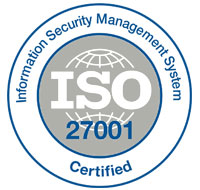
ISO 13485 benefits
- Access to markets that recognize or require the certification including Canada and Europe
- Reduce operational costs by highlighting process deficiencies and improving efficiency
- Increase customer satisfaction by consistently delivering quality products and systematically addressing complaints
- Proven commitment to quality through an internationally recognized standard
- Adds transparency to the way complaints, surveillance or product recalls are handled
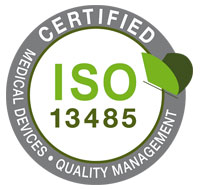
SA 8000 certification is a management systems standard, modeled on ISO standards. It measures the performance of companies in eight areas important to social accountability in the workplace: child labour, forced labour, health and safety, free association and collective bargaining, discrimination, disciplinary practices, working hours and compensation.
What are the benefits?
- Achieve best practice in ethical employment, trading and operations
- Engage and motivate your employees with improved morale
- Introduce greater transparency to the way you run your business
- Maintain existing business and attract new customers and investors
- Gain recognition as an socially accountable organization
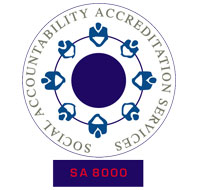
The effective implementation of HACCP will enhance the ability of companies to: protect and enhance brands and private labels, promote consumer confidence and conform to regulatory and market requirements.
Who can use HACCP?
All businesses involved in the food supply chain from producers to retailers can use HACCP. Enterprises include, but are not restricted to, those linked with:
- Meat & Meat Product
- Spices & Condiments
- Cereals
- Fruits & Vegetables
- Dairy Products
- Fish & Fishery Product
- Nuts & Nut Product
- Bakery & Confectionary
- Hotels
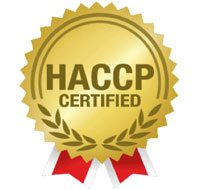
HACCP provides businesses with a cost effective system for control of food safety, from ingredients right through to production, storage and distribution to sale and service of the final consumer. The preventive approach of HACCP not only improves food safety management but also complements other quality management systems. The main benefits of HACCP are:
- Saves your business money in the long run
- Avoids you poisoning your customers
- Food safety standards increase
- Ensures you are compliant with the law
- Food quality standards increase
- Organises your process to produce safe food
- Organises your staff promoting teamwork and efficiency
- Due diligence defence in court
- Increase customer and consumer confidence
- Maintain or increase market access
- Improve control of production process
- Reduce costs through reduction of product losses and rework
- Increase focus and ownership of food safety
- Business liability protection
- Improve product quality and consistency
- Simplify inspections primarily because of the recordkeeping and documentation
- Alignment with other management systems (ISO 22000)